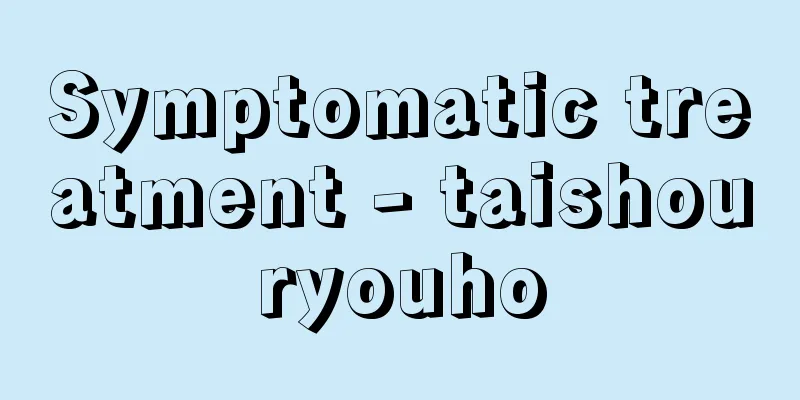Personnel evaluation - Jinjikouka

|
In a company, a superior evaluates the subordinate's ability, performance, work attitude, motivation (also called emotion), etc. In government offices, it is also called a performance evaluation. It is widely used in personnel management, such as salary increase and bonus evaluation, promotion, placement and transfer, and education and training. When conducting an evaluation, it is necessary to clarify the evaluation elements and evaluation criteria beforehand. For example, in the case of performance evaluation, the evaluation elements are the quality and quantity of work accomplished, and the criteria for evaluating them are the pre-set goals to be achieved. Evaluation methods include the graphic rating scale method (a method in which a scale with a scale showing the evaluation level is set for each evaluation item, and the corresponding items are checked), the checklist method (also known as the Probst method, in which a checklist is prepared that lists the attitudes and behavioral characteristics at work, and the actual behavior of the person being evaluated is observed and the corresponding items are checked), and the management by objectives method (a method in which specific goals are set for the performance of duties over a certain period of time, and performance is evaluated according to the degree to which these goals are achieved). Personnel appraisals are said to have been developed in the United States from the 19th century to the early 20th century, mainly by government agencies, and spread to private companies after World War I. They were not fully introduced into Japan until the 1950s. Since then, there have been various developments in terms of the subject of appraisal (evaluator), elements, methods, procedures, and even the purpose of use. Experts have pointed out several mistakes that evaluators are prone to make, including the halo effect (a phenomenon in which an overall impression formed by a strong impression of a person being evaluated at a particular situation or time influences the evaluation of each evaluation element). As a countermeasure, adjustments are made by using multiple evaluators and evaluators are given training. Considering the purpose of using personnel evaluation, the system and its operation must be objective and fair so that employees can accept it. To achieve this, it is essential to make evaluation elements and standards public, provide feedback on the evaluation results to employees, and provide workers with the right to speak and file objections, as well as regulations by labor unions. [Namie Iwao] "Japanese Personnel Appraisal" by Endo Kimitsugu (1999, Minerva Publishing) " "American Wage and Evaluation System" by Sasajima Yoshio (2001, Nikkeiren Publishing)" "The Concept and Practice of Personnel Appraisal by Job Category" edited by Nikkeiren Personnel and Wage Center (2002, Nikkeiren Publishing) [Reference] | | |Source: Shogakukan Encyclopedia Nipponica About Encyclopedia Nipponica Information | Legend |
|
企業において上司が部下の能力、業績、勤務態度・意欲(情意ともいわれる)などを評価すること。官公庁などでは勤務評定ともよばれる。昇給や賞与の査定をはじめ、昇進・昇格、配置・異動、教育訓練など人事管理に広く利用される。 評価を実施するうえでは、あらかじめ評価要素と評価基準を明らかにしておく必要がある。たとえば、業績評価の場合は、達成された仕事の質と量が評価要素であり、それを評価する基準は事前に設定された達成目標である。評価の手法としては、図式評定尺度法(各評価項目ごとに評価段階を表す目盛りのついた尺度を設け、該当する箇所をチェックする方法)、チェックリスト法(プロブスト法とも。勤務における態度や行動の特性を列挙したチェックリストを用意し、被評価者の実際の行動を観察し該当する項目をチェックする方法)、目標管理法(一定期間の職務遂行にかかわる具体的な目標を設定し、その達成度によって業績を評価する方法)などがある。 人事考課は19世紀から20世紀初めにかけて、アメリカにおいて政府機関を中心に開発され、第一次世界大戦後に民間企業に普及したとされる。日本への本格的導入は1950年代以降のことである。その後、評価の主体(評価者)、要素、手法、手続、さらには利用目的などの面で多様な展開がみられる。 ハロー効果(後光効果。被評価者の、ある特定の事態や時点における強い印象により形成される全体的印象が個々の評価要素の評価に影響を与えること)をはじめ、評価者が陥りやすい誤りが専門家によりいくつか指摘されている。その対策として、評価者の複数化による調整、評価者の訓練なども行われる。 人事考課の利用目的にかんがみて、制度とその運用には従業員の納得が得られるような客観性や公正さがなによりも求められる。そのためには、評価要素や基準などの公開、評価結果の本人へのフィードバック、労働者側の発言権・異議申立て権や労働組合による規制などが欠かせない。 [浪江 巖] 『遠藤公嗣著『日本の人事査定』(1999・ミネルヴァ書房)』▽『笹島芳雄著『アメリカの賃金・評価システム』(2001・日経連出版部)』▽『日経連人事賃金センター編『職務区分別人事考課の考え方と実際』(2002・日経連出版部)』 [参照項目] | | |出典 小学館 日本大百科全書(ニッポニカ)日本大百科全書(ニッポニカ)について 情報 | 凡例 |
>>: Draft of Qing history - Shinshikou
Recommend
Parity - parity (English spelling)
A property of particles in quantum mechanics. A s...
Mitake [town] - Mitake
A town in Kani County in southern Gifu Prefecture....
recognition coloration
...The former are classified as protective colors...
Atypical cells
...The genus Oscillaria, which was found as a fos...
Cardiac dilatation
This refers to a condition in which the volume of ...
Yataro Okura (24th generation)
...Afterwards, Okura Toraakira and Eitora succeed...
Maritime capture
In international law, this refers to the capture ...
Oath - Oath
...After the glacier disappears, the sand and gra...
Magnification - Birth
The ratio of the size of an image to the size of ...
Irish Music - Irish Music
Among the folk songs of the British Isles, Irish f...
Kyushu Tandai - Kyushu Tandai
The position was established by the Muromachi Sho...
Central place theory
A theory that considers cities as the centers of a...
Nursing science
The academic discipline that is the basis of nursi...
Indole-3-acetic acid
…From 1931 to 1935, F. Kögl and his colleagues at...
Emaille croaisonne - Emaille croaisonne
...A transparent glaze is then applied on top and...







![Hatano [town] - Hatano](/upload/images/67cc863737020.webp)

